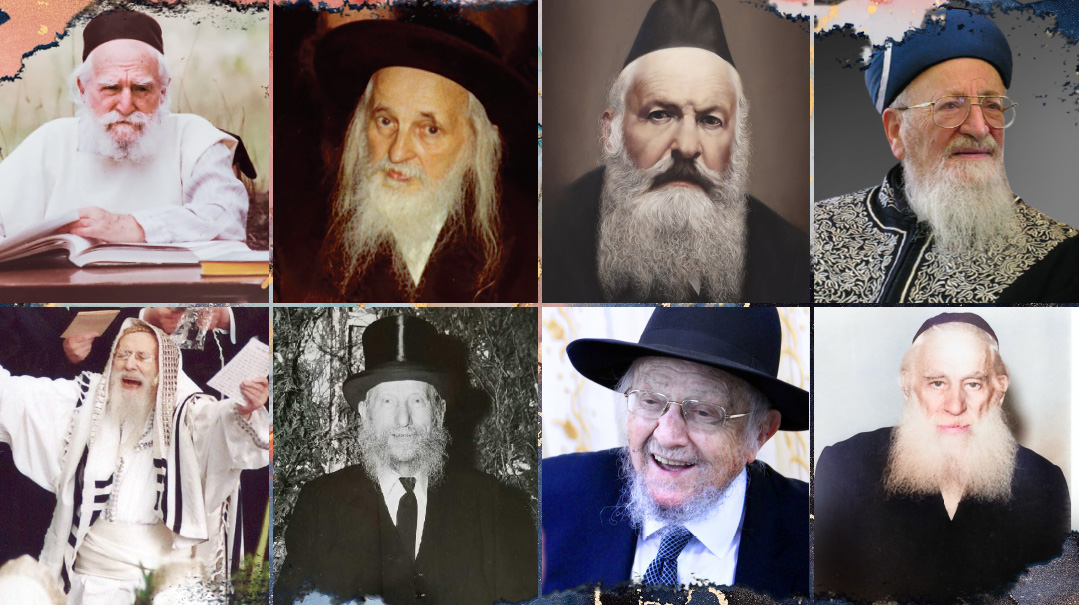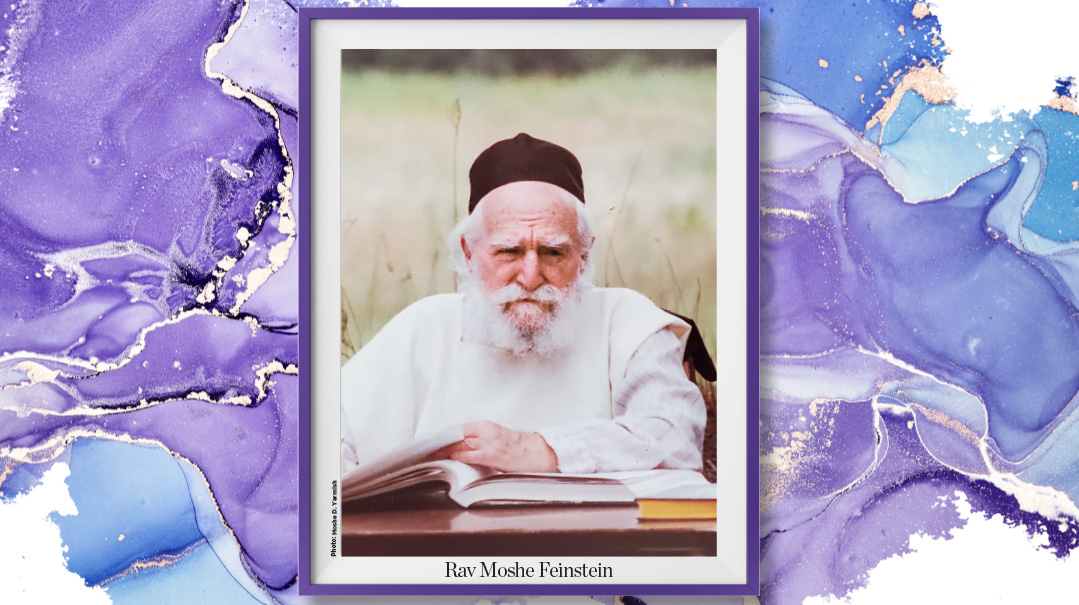Guest of Honor

Each of us welcomes special guests — the Ushpizin who enter our succah every night — but what is it like to host a living gadol?

Project Coordinator: Rachel Bachrach
While they might have been young at the time, people who had gedolim in their homes retain impressions that remain forever — like the surprising comfort in being around a great Torah leader and basking in his sense of humor, his overarching gratitude, and the blessings he bestowed on their family.
Unforgettable experiences, from sitting together at the table, getting to serve a drink, or giving up their room for these giants of the generation continue to shape their lives as adults

Rav Moshe Feinstein
As told to Adina Lover by Rabbi Aaron Sochet
He was like a Zeidy
IN
1970, Rav Moshe Feinstein flew to California to raise money for his son Rav Reuven’s newly-opened yeshivah in Staten Island. Barney Hasden, who would fundraise for Mesivta Tifereth Jerusalem, had arranged for a dinner to support the yeshivah at the Ambassador Hotel in Los Angeles (where Robert Kennedy had been assassinated in 1968).
My father, Reb Yisroel Sochet, was part of the team arranging the dinner. We had recently moved to Los Angeles, and my father was very excited about the opportunity to welcome Rav Moshe.
Rav Moshe stayed in a hotel, but I’ll never forget when we got the news that we’d be zocheh to host royalty for a meal. The whole family got involved in the preparations, and it was all we talked about during the week we had to prepare. My mother consulted with her friends about what to serve, and my parents had long discussions about whom to invite.
Of course, my parents wanted Rav Moshe to be completely comfortable. They didn’t want to serve fleishigs in case Rav Moshe wouldn’t want to eat meat out of his home, and as there was no chalav Yisrael available in LA at the time, my parents decided to serve fish, which was pareve. Then, because we didn’t have nice milchig dishes, my mother went out and bought brand new china for the meal. (They became known in our house as “Rav Moshe’s dishes,” and we never used them again.)
My father took me to join the entourage that greeted the gadol hador at the airport. There were about 30 people who traveled to greet him — the community in Los Angeles was still very small at the time; not many people had an understanding of who Rav Moshe was. I was nine years old, and I remember going with my father, my maternal grandfather who was visiting us, two uncles who lived in town, and a cousin my age. Rav Simcha Wasserman, who lived in LA, was also there. A man whose five-year-old daughter was being treated at Los Angeles Children’s Hospital and whose family was staying in our house came as well.
In those days, we were able to walk right up to the plane where Rav Moshe disembarked. We met him on the tarmac where he was seated on a golf cart, and we surrounded him as he was transported to the waiting car that would take him to his hotel.
Rav Moshe was in Los Angeles for two days, and he visited for dinner that first night. He came along with his son Rav Reuven Feinstein, Barney Hasden, and Rabbi Moshe Rivlin. (Originally part of the hanhalah in Torah Vodaath, Rabbi Rivlin had become especially close to Rav Moshe and served as an executive director in MTJ.)
When the doorbell rang, my younger brother, Chaim Baruch, who was four at the time, ran to answer it.
Taking one look at the hadras panim of the gadol, my brother asked, “Are you Hashem?”
Laughing, Rav Moshe replied, “Nein, Hashem is in der himmel.”
My brother thought for a moment and then declared, “Well, then you must be His best friend.”
We sat down to the meal, an intimate gathering consisting only of Rav Moshe’s entourage and family. We were joined by my grandfather and the two uncles who lived in town, Rav Ozer Yonah Kushner and Rabbi Yossi Rubanowitz, along with another one of my mother’s cousins who was living in LA. There was also the family who was staying in our house. In the kitchen, my mother, sisters, and aunts prepared and served the meal. My mother also had some help with the setup from a couple of close friends.
My father seated Rav Moshe at the head of the table, with my grandfather on one side and himself on the other. During the three hours he spent in our home, my father asked Rav Moshe many sh’eilos. They discussed whether to bentsh gomel after flying; Rav Moshe has a teshuvah in which he paskens that one should. My mother had recently hired a housekeeper, and Rav Moshe guided my father on issues related to bishul akum. He suggested that my mother keep the meat freezer locked so Angelina, the housekeeper, could not access it. They also discussed the halachos of opening bottle caps on Shabbos.
My father wanted to bring a yeshivah gedolah to Los Angeles, but the roshei yeshivah of a small local yeshivah did not feel the city could support two similar institutions. Rav Moshe advised my father against starting a yeshivah that would compete with one that was already established.
“What about kinas sofrim?” Rabbi Rivlin asked, because more Torah in the community could be only a good thing.
However, Rav Moshe was concerned that the yeshivos would compete for limited funds. (In the end, my father was instrumental in bringing Rabbi Chaim Fasman and Kollel Bais Avrohom to the city.)
Although we were nervous at first, Rav Moshe put our discomfort to rest. He was like a zeidy, laughing with the children, encouraging us, all while holding my younger brother and the daughter of the bikur cholim family on his lap. Of course, we took pictures and home movies that we treasure to this day.
Even as he deliberated over matters of great import for my father and our family, Rav Moshe’s manner was entirely unassuming and relatable. We witnessed firsthand how greatness goes hand-in-hand with humility.
My little brother had it right: this was Hashem’s best friend.
Rav Aaron Sochet is a rav and moreh hora’ah in Los Angeles, California.
Oops! We could not locate your form.







